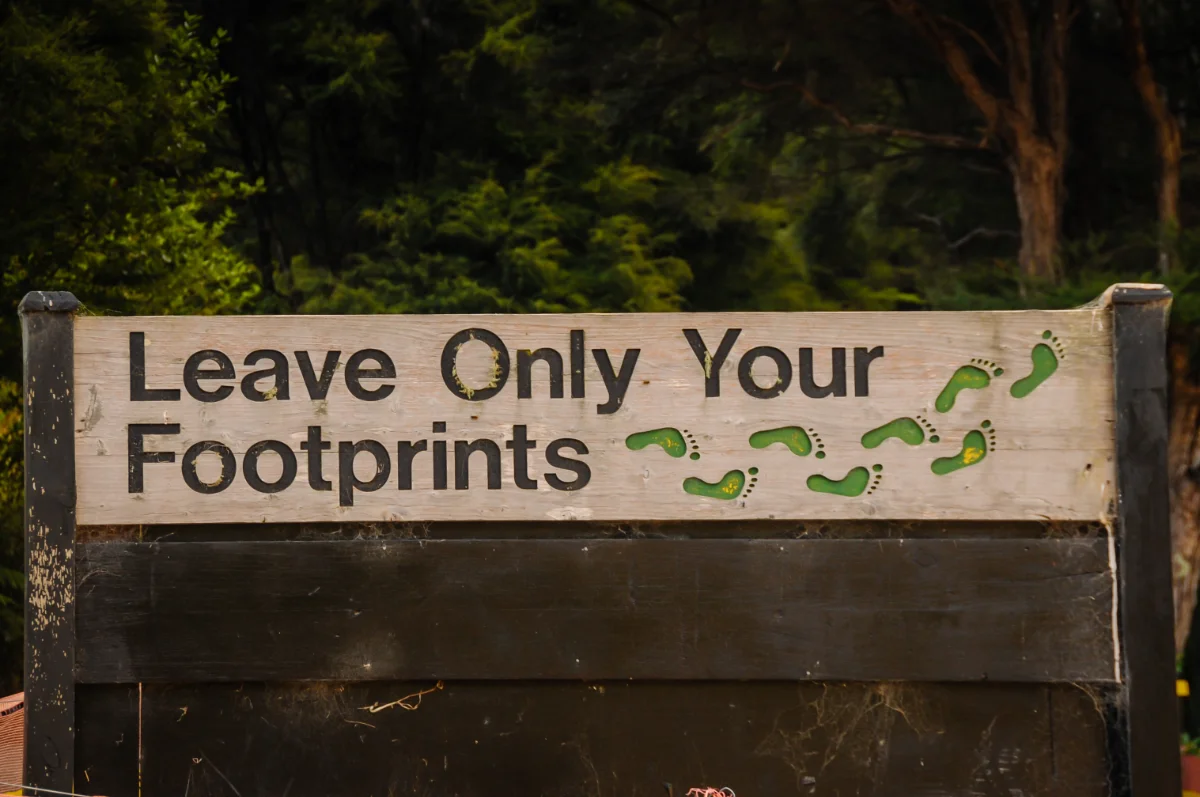More and more people are pushing to get outside into nature and fresh air. Switching off to enjoy the beauty of the meadows and forests. However, the view is quickly dampened, when you repeatedly see cigarette butts or plastic waste on the ground. There are hardly any places left that are truly untouched and where you can’t see any human impact. We make nature our own and this naturally has consequences for it. To ensure that we leave as few traces as possible in nature during our trekking adventures and that it hopefully continues to remain as beautiful as it is for many years to come, the Leave no Trace principle was brought to life. We’ll explain what it’s all about in this post!
Content
The basic idea behind Leave no Trace
The principle of Leave no Trace was introduced by the Center for Outdoor Ethics in the 1970s to raise awareness of nature among (long-distance) hikers. The idea is actually quite logical: every time you go on an outdoor adventure, move and act there so that no traces can be traced back to your presence.
This applies of course to visible traces such as garbage or fireplaces, but also residues of soapy water or torn branches or flowers are traces with long-lasting consequences for nature. Its protection is always at the forefront of this principle. For a successful, sustainable and nature-friendly trekking tour there are the so-called 7 golden rules.
The 7 golden rules
Planning and preparation
You may be wondering what exactly good planning and preparation has to do with Leave no Trace. We’ll explain it to you! Let’s say you are more the spontaneous type and prefer to discover everything on the spot rather than informing yourself in advance. Of course, this can create a sense of adventure, but on the other hand, when you go long-distance hiking, you will find yourself in many unexpected situations where nature will be influenced and changed by your actions – whether you like it or not.
This can happen simply because part of the long-distance trail is closed and you have to take a different path, trampling down the plants and ground that grow there. Or even an unexpected river crossing, where you have to use rocks to make your way through the water. It can then slow down the flow of the river for a long time afterwards.
Good planning can prevent this from happening. Inform yourself in advance about the nature of the trail, the exact route and the weather in the area. In our trail search you will find all important information.
Additionally, you can prepare your own meals and take them with you in reusable boxes, eliminating packaging waste. Good planning is therefore, as in so many cases, the be-all and end-all to ensure that as few traces as possible are left behind even before the long-distance hike.
Long-distance hiking and sleeping on solid ground
As mentioned in the first rule of Leave no Trace, you should rather stay on the long-distance trails that are already marked and well-trodden. Like that you don’t trample plants and don’t disturb wild animals. But not only while trekking you should pay attention to where you leave your footprints and tracks, also the choice of sleeping place is very important.
This should be at least 100 – 200 m from the lake or river shore in order to not disturb the delicate ecosystem. In addition, established sleeping places, rocks, dry meadows or snow are the best places to spend the night with a tent. This is where the least damage can be done. You should always take care to spread out as little as possible, so that the fewest plants are damaged, and also avoid places that already show human traces. Otherwise nature will be even less able to recover.
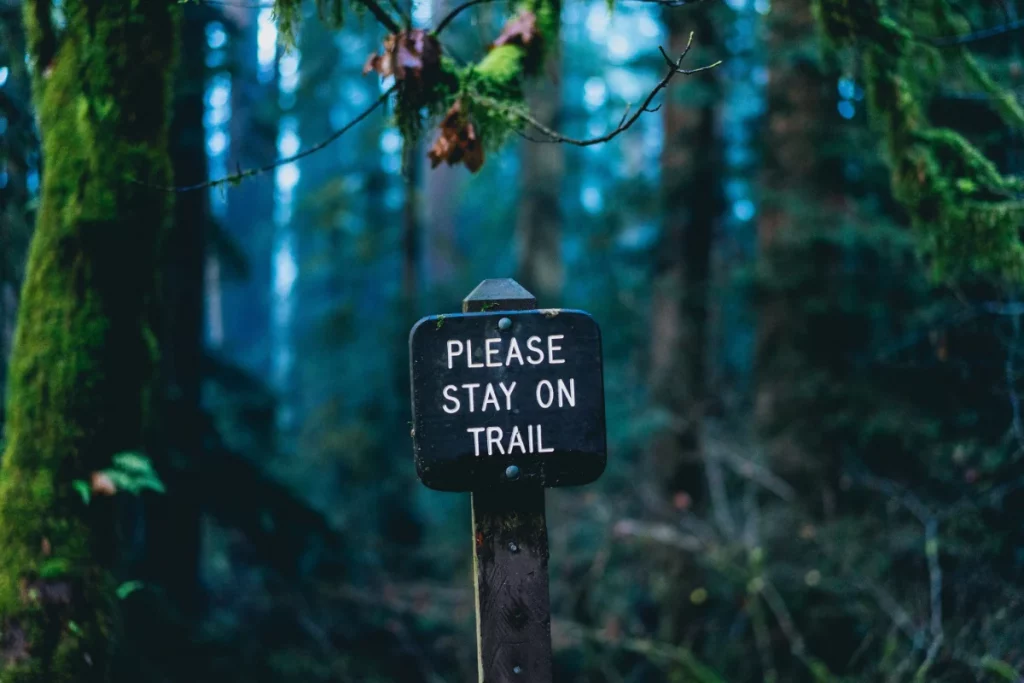
The correct disposal of waste
Probably the most obvious trace of humans in nature is, of course, garbage. No one likes to see it, but unfortunately it is now distributed in so many places around the world that there are hardly any places left without trash. Whether it’s cigarette butts, a used tissue, beer coasters or even just a piece of gum, even small amounts of trash have an impact on nature. Therefore, the third rule of Leave no Trace is even more important. On the one hand, this means not leaving any trash behind, but on the other hand, it also means taking other people’s trash with you. It’s best to always bring an extra trash bag and leave the long-distance trail, your sleeping or resting place always cleaner than you found it.
In order to produce as little waste as possible yourself, there are many methods. The easiest, logically, is simply to take back all packaging and food scraps and then dispose them properly at home or at special collection points.
But also feces and soap residues are waste for nature and have devastating consequences for the environment. Of course, if you’re trekking for several days, you can’t avoid going to the bathroom and washing yourself, so what now?
The issue of washing is solved relatively quickly. If it’s convenient for you, just wash with water. If you do want to use soap, choose a biodegradable soap and use it as little as possible to keep the traces very small.
The toilet issue is already a little more elaborate, but no less important. You should take a cat as a model for this. Sounds strange, but their method is actually the most environmentally friendly. Dig a hole about 20 cm deep in dark soil for your droppings and then cover it up again. This is the fastest way for them to decompose without affecting other living things. Of course, you should not bury toilet paper with it, but instead take it back with you.
In general, as with the choice of sleeping place, keep sufficient distance from water.
Leave what you find
The fourth principle of Leave no Trace should also be clear, but we will explain it again. Simply put, it means you don’t come home from your trek with more than you left with, nor did you touch or move anything on site. This applies to everything from picking flowers to collecting shells to building wooden huts or bridges. If everyone thought that way, soon there would be no more flowers in the meadow and no more shells on the beach. That would not only be a pity for you, but would also have significant consequences for the ecosystem. Therefore, admire nature with your eyes and give everyone the chance to experience nature the same way!
Avoid campfires
That a fire can leave permanent damage in nature is probably clear to all of us. Nevertheless, on a long-distance hike you always need fire for cooking, warming or as a source of light. To leave no trace it would be best to bring special camping stoves, warm clothes and flashlights instead. This could completely prevent a fire.
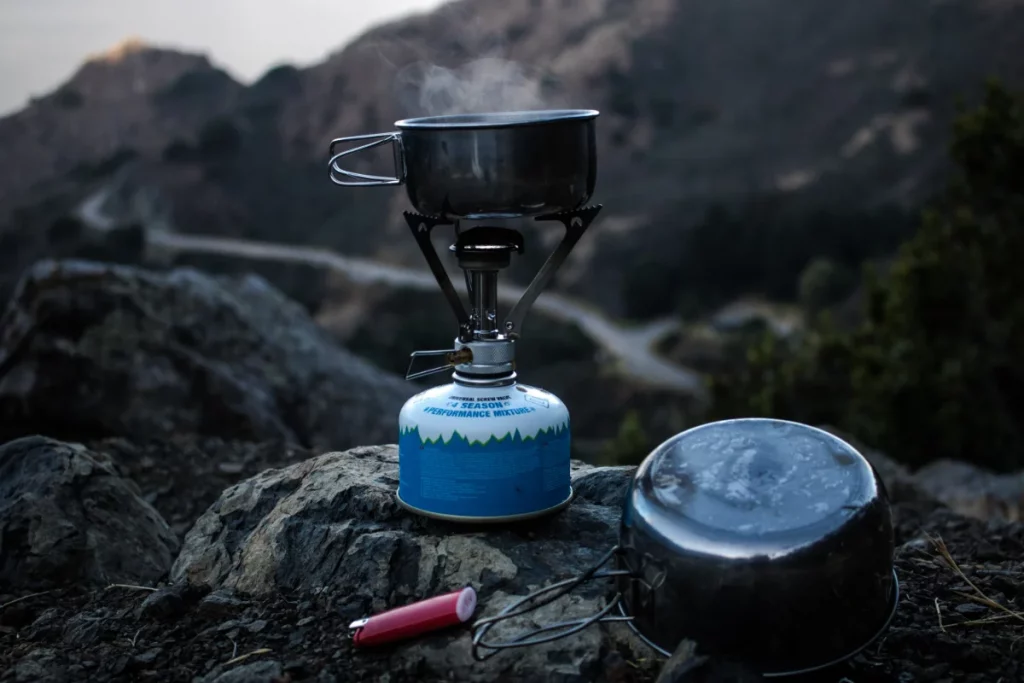
If you do have to start a fire, keep it as small as possible or use an already established fireplace where you can’t do more damage. As firewood you should not break off new branches, but only take dry branches that are already broken off on the ground.
Most importantly, though, make sure your fire is out when you leave the place, because a burning fire left unchecked could have dire consequences, and entire forests have already been burned down by such carelessness. This not only destroys countless trees and plants, but also destroys the habitats of animals and many die in the fire. It should and can be avoided at all costs through mindfulness.
Respect the wildlife
When we go hiking far away, we invade the habitat of wild animals every time. In order to avoid them noticing that we are there, you should only ever watch them quietly from a distance. An attempt to feed or pet them is an absolute no-go in the eyes of Leave no Trace.
They should not get used to people, as this can change their whole behavior. Especially human food can definitely harm them and this should be avoided, of course. Therefore, pack your food tightly and don’t leave any food scraps behind.
Additionally, an encounter with a wild animal could also be dangerous for us trekkers, as they are of course not used to humans and may perceive you as a danger. This is particularly dangerous during the breeding season. Contacting a wild animal will not only harm the animal, but possibly you as well.
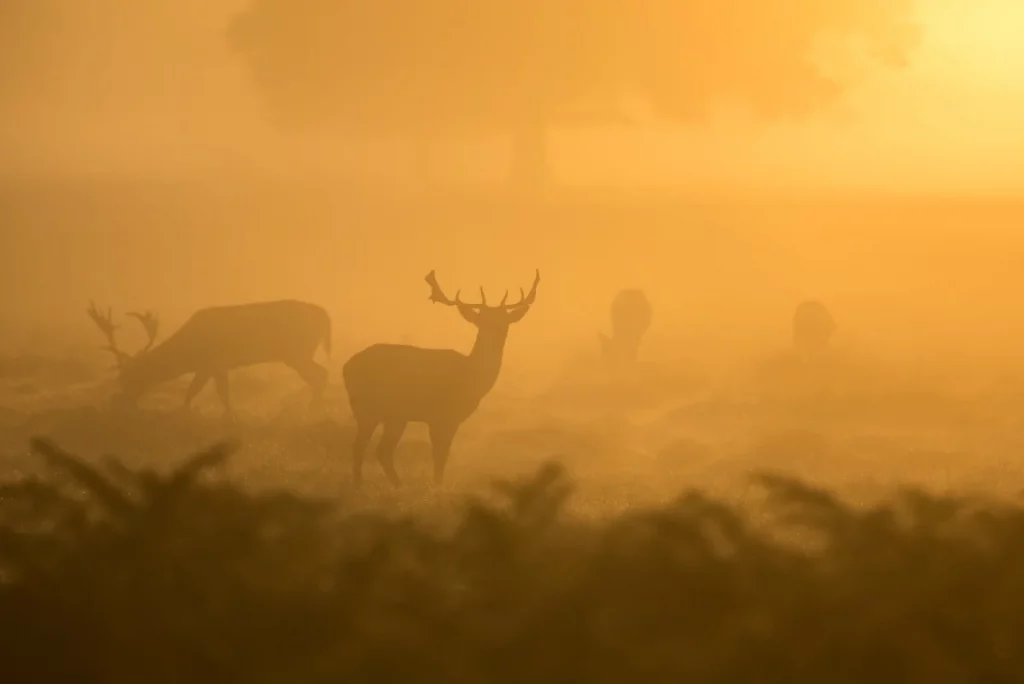
Be considerate of other long-distance hikers
Leave no Trace is not only about being considerate of nature and its creatures, but also of other long-distance hikers. Just like you, they are fascinated by nature and want to experience it up close on their trekking tour. And you too would be annoyed by loud noises like music or pushing in front of you on the long-distance trail. Therefore, treat the other long-distance hikers in the same way as you prefer to enjoy your trekking tour and this is equally considerate for nature and the others.
Sustainability and Leave no Trace
For many, the Leave no Trace principle does not stop with these seven rules. There are many more ways to make long-distance hiking more sustainable. Hiking or long-distance hiking itself is already a very sustainable sport, since we have little impact on nature if we behave correctly.
To be even more sustainable on the road, you can search for trails in your area in our trail search. This saves you the long journey, costs and is altogether more nature-friendly.
You can also make your clothing and equipment sustainable. Nowadays many outdoor companies are focusing on sustainability and recyclable materials. But basically it’s actually like in many cases and less is more. Buy only what you really need and go for high-quality items rather than having to buy something new every two years.
Not all garbage is the same
Not all garbage is the same. It is incredibly important to separate the garbage, as some materials take longer to decompose than others and some materials do not decompose at all. Also, it’s not always called rotting, only biological waste can do that through bacteria and microorganisms. Glass and metal, for example, break down due to weathering, and plastic becomes microplastic, which means it never completely decomposes.
In addition, the environment and the outside temperature have an influence on the rotting time. For example, tropical fruits such as banana peels do not rot that well in the European climate, which in turn is considerably faster in the tropics. Also, in general, the assumption that food can be thrown away without any problems, because sooner or later it will rot, is not quite correct. The colder the temperature, the slower food rots. In addition, imported foods such as fruits and vegetables are often full of pesticides that are harmful to nature.
Even paper, which is made of wood and is therefore actually a natural product, cannot be thrown away so easily. Most products are no longer as natural as they are thought to be, as they are further processed for more shelf life and stability and may contain colorants. All this makes the decomposition process much more difficult.
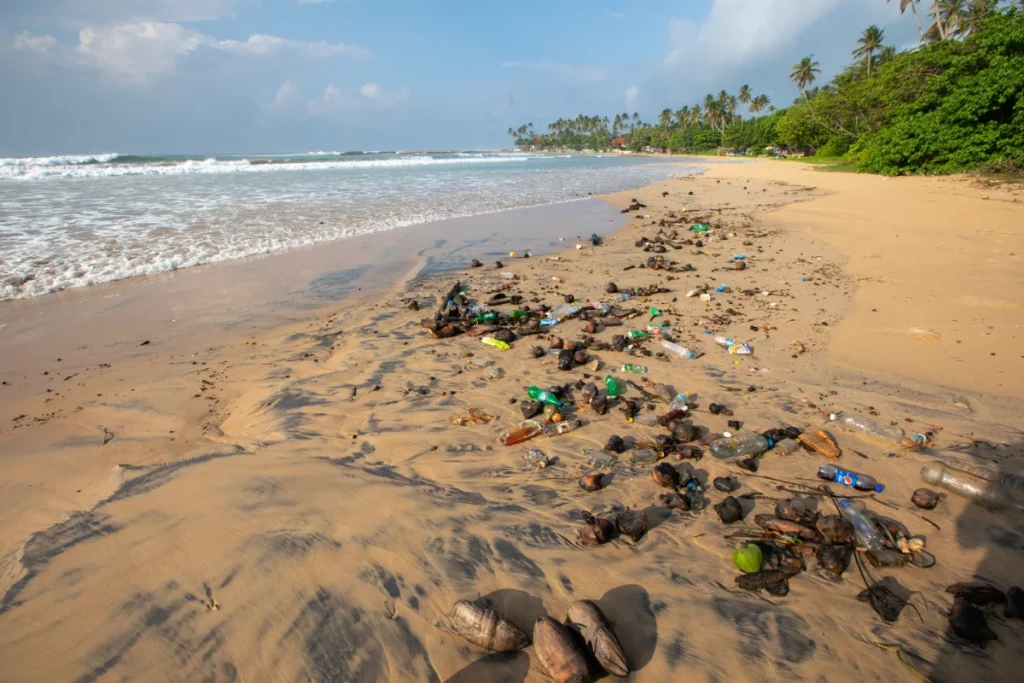
Here is some more information about the rotting or decomposition time of different wastes, so that you can better imagine how long it actually takes for your apple case or your tissue to rot:
- Apple case: 2 weeks
- Banana peel: 6 weeks – 2 years
- Orange peel: 2 – 3 years
- Paper tissue: 3 months – 1 year
- Newspaper: 1 – 3 years
- Cigarette: 1 – 5 years
- Chewing gum: 5 years
- Aluminum can: 100 – 500 years
- Plastic film: 30 – 40 years
- Lighter: 100 years
- Plastic bottle: 100 – 1000 years
- Glass bottle: 4000 – 50000 years
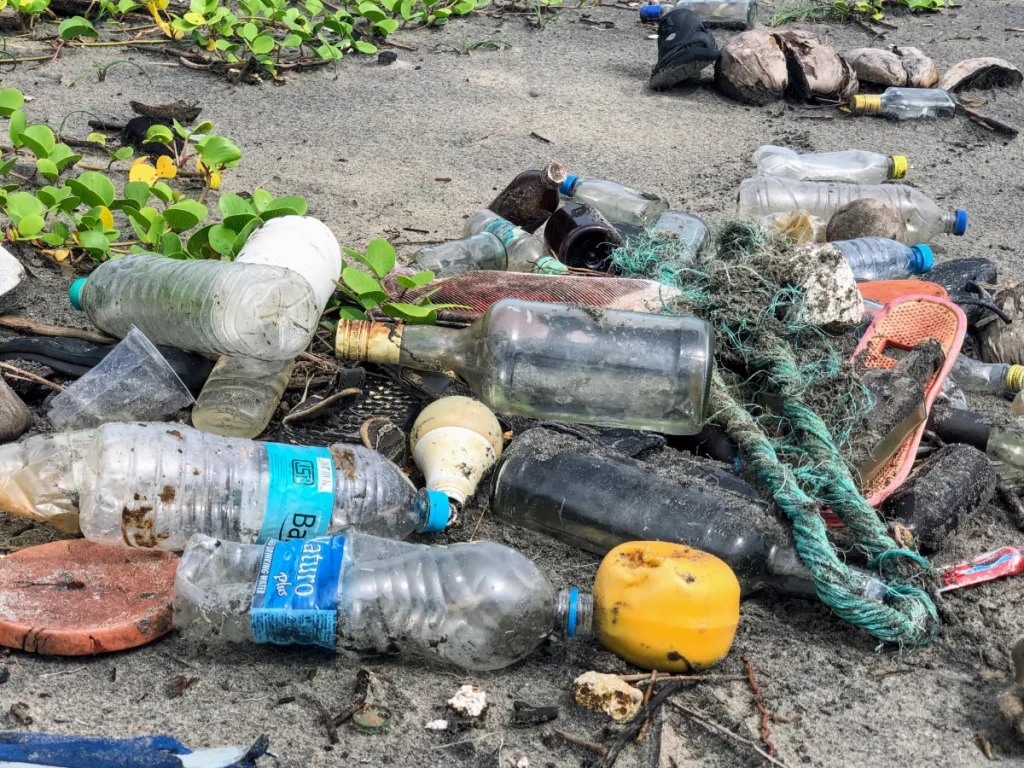
Hopefully, by now you have realized how important it is to pay attention to nature when long-distance hiking and to protect it so that it will remain with us for a long time to come. In our opinion, the principle of Leave no Trace is one of the most important in order to be able to enjoy nature responsibly and to appreciate it better, especially in an experience as close to nature as long-distance hiking. If we all follow the 7 golden rules in our trekking tours, then a lot is already done!

